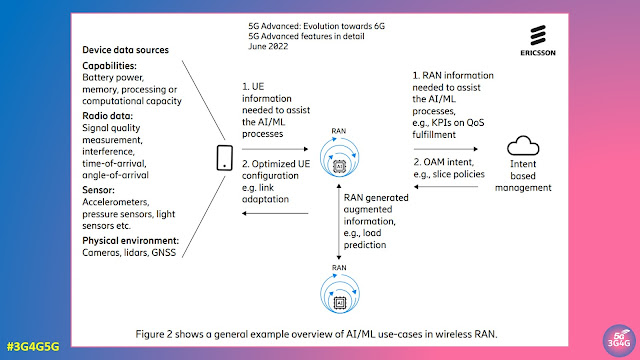Our industry loves acronyms. In fact, sometimes it feels as if half our job is simply keeping up with them, while the other half is explaining them to everyone else. A recent example I saw referenced D2D for satellites, but expanded it as Device to Device instead of Direct to Device. Today, two similar acronyms are gaining momentum and are likely to become far more mainstream: AIoT and A-IoT.
Artificial Intelligence (AI) and the Internet of Things (IoT) are two of the key technological pillars of the modern digital world. IoT connects billions of devices, from sensors and cameras to industrial machinery, all producing vast amounts of useful data. AI enables these devices and systems to learn from this data, recognise patterns, predict outcomes, and act autonomously.
When these technologies come together, we get the Artificial Intelligence of Things, or AIoT. In simple terms, AIoT allows connected devices to analyse the data they generate and make decisions without always relying on central systems.
The intelligence in AIoT can sit in different places. Cloud based AI offers extensive processing power and the ability to leverage wider datasets. Edge AI processes data closer to where it is generated, enabling faster and more context aware decision making while reducing bandwidth use and protecting data privacy. Increasingly, lightweight machine learning models allow intelligence directly on devices themselves, enabling instant reactions without constant network access. This evolution transforms IoT devices from passive data collectors into proactive decision makers.
The benefits are significant. AIoT increases automation, improves efficiency, enhances reliability, and enables predictive maintenance, energy optimisation, autonomous navigation, and smarter logistics. It also supports sustainability initiatives, for instance by improving energy and water use monitoring or enabling more intelligent control of municipal utilities. In short, AIoT forms a key part of the digital transformation strategies emerging across industries.
To get a better sense of how AIoT could shape our everyday lives, I have embedded a couple of older Ericsson videos below that imagine a future where intelligence is seamlessly built into everything.
For anyone interested in going deeper into this topic, Transforma Insights and Supermicro have good explainers. While 3GPP continues to work on AI, ML and IoT, AIoT as a concept is largely implementation driven rather than a standardised feature in itself.
In contrast, 3GPP is actively defining a different acronym: A-IoT, short for Ambient IoT.
Ambient IoT represents a major shift in connected device design. Instead of relying on batteries or frequent charging, Ambient IoT devices operate using energy harvested from their surroundings. This can include radio signals, light, heat, or motion. The technology supports both passive operation, where devices backscatter incoming RF signals, and active operation, where they harvest enough power to generate and transmit signals independently.
Unlike traditional IoT devices, Ambient IoT units are extremely low power, low cost, and very simple in design. They have a shorter range and lower data throughput than conventional wireless technologies, but they excel in scenarios where massive numbers of tiny, battery-free sensors can be deployed and left to operate with minimal maintenance.
This makes Ambient IoT well suited to applications such as environmental sensing, supply chain tracking, inventory monitoring, smart agriculture, and intelligent labelling. It also opens opportunities in consumer environments, from smart packaging to indoor positioning. With the right network support, these devices can operate indefinitely, enabling sustainable, large-scale sensing networks.
Ambient IoT is already included in 5G Advanced Release 19. For those interested in learning more, 3GPP has a detailed overview, Oppo has produced an excellent white paper, and LG Uplus has published a forward looking document exploring Ambient IoT in the context of 6G.
Both AIoT and Ambient IoT represent the next phase of connected intelligence. AIoT pushes computation and decision making closer to where data originates, while Ambient IoT removes power barriers and enables pervasive, maintenance-free connectivity. Together, they will support systems that are scalable, energy efficient and context aware.
As these technologies mature, we can expect a world where devices are not only always connected, but also constantly learning, adapting, and operating independently with minimal energy demands. The future of connectivity lies in this balance between intelligence and efficiency, and both AIoT and Ambient IoT will play a crucial role in shaping it.
Related Posts:
- 3G4G: Internet of Things (IoT) and Machine-2-Machine (M2M)
- The 3G4G Blog: Are there 50 Billion IoT Devices yet?
- Free 6G Training: Zero-Energy Devices and Air Interface
- Connectivity Technology Blog: InterDigital’s 6G Vision of “Zero-energy” (ZE) air-interface designs
- The 3G4G Blog: 3GPP Release 18 Description and Summary of Work Items
- The 3G4G Blog: Low Latency Power Saving with Low Power-Wake Up Signal/Receiver (LP-WUS/LP-WUR)
- The 3G4G Blog: Small Data Transmission (SDT) in LTE and 5G NR
- Connectivity Technology Blog: The Wide Variety of Internet of Things (IoT) Technologies for Different Situations
- The 3G4G Blog: Introduction to 5G Reduced Capability (RedCap) Devices
- Connectivity Technology Blog: Cellular Connectivity Technology Landscape and Standards for Industrial IoT
- The 3G4G Blog: Mobile Initiated Connection Only (MICO) mode in 5G System
- The 3G4G Blog: Embedded SIM (eSIM) and Integrated SIM (iSIM)
















